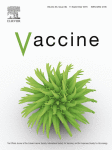Ver ítem
- xmlui.general.dspace_homeCentros e Institutos de InvestigaciónCICVyA. Centro de Investigación en Ciencias Veterinarias y AgronómicasInstituto de VirologíaArtículos científicosxmlui.ArtifactBrowser.ItemViewer.trail
- Inicio
- Centros e Institutos de Investigación
- CICVyA. Centro de Investigación en Ciencias Veterinarias y Agronómicas
- Instituto de Virología
- Artículos científicos
- Ver ítem
Foot-and-mouth disease virus infection of dendritic cells triggers phosphorylation of ERK1/2 inducing class I presentation and apoptosis
Resumen
Foot-and-mouth disease (FMD) is a highly contagious viral disease of cloven-hoofed animals. This pathology is caused by foot-and-mouth disease virus (FMDV). Over time, the development of vaccines to prevent the spread of this illness became essential. Vaccines currently used contain the inactivated form of the virus. However, vaccination generates an immune response different to that induced by the infection. We investigated whether these differences are
[ver mas...]
Foot-and-mouth disease (FMD) is a highly contagious viral disease of cloven-hoofed animals. This pathology is caused by foot-and-mouth disease virus (FMDV). Over time, the development of vaccines to prevent the spread of this illness became essential. Vaccines currently used contain the inactivated form of the virus. However, vaccination generates an immune response different to that induced by the infection. We investigated whether these differences are related to intracellular mechanisms on dendritic cells (DCs). As a result, we demonstrated that the internalization of infective virus triggered the phosphorylation of ERK1/2, which was involved in the activation of caspase-9, the intrinsic pathway of apoptosis and the delivery of viral peptides on MHC class I molecules. While, inactivated virus (iFMDV) did not affect this pathway or any function mediated by its activation. As described, infectious virus in DCs was also associated to autophagy LC3 protein and was associated to lysosomal protein Lamp-2; contrary to observe for the iFMDV. Strikingly, the processing of viral antigens to accommodate in class I molecules does not appear to involve the proteasome. Finally, this increased presentation promotes a specific cytotoxic response against infectious virus.
[Cerrar]

Autor
Langellotti, Cecilia Ana;
Cesar, Gonzalo;
Soria, Ivana;
Quattrocchi, Valeria;
Jancic, Carolina Cristina;
Zamorano, Patricia Ines;
Vermeulen, Elba Monica;
Fuente
Vaccine 33 (38) : 4945-4953. (11 September 2015)
Fecha
2015-09
Editorial
Elsevier
ISSN
0264-410X
Formato
pdf
Tipo de documento
artículo
Palabras Claves
Derechos de acceso
Restringido
 Excepto donde se diga explicitamente, este item se publica bajo la siguiente descripción: Creative Commons Attribution-NonCommercial-ShareAlike 2.5 Unported (CC BY-NC-SA 2.5)
Excepto donde se diga explicitamente, este item se publica bajo la siguiente descripción: Creative Commons Attribution-NonCommercial-ShareAlike 2.5 Unported (CC BY-NC-SA 2.5)

